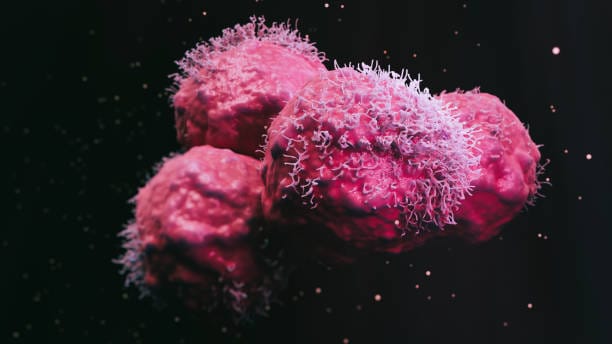Inside the human body, a war is constantly waged. Every second, our immune system scans, evaluates, and eliminates cells that threaten our well-being. Among its many duties, perhaps none is more crucial—or more mysterious—than its fight against cancer. And yet, in countless patients, cancer manages to grow unnoticed, unchecked, and unchallenged, thriving in defiance of this sophisticated defense system.
Why do some tumors escape this vigilant internal police force? Why does the immune system, designed to protect, sometimes look the other way?
A team of scientists at UT Southwestern Medical Center has moved us one step closer to answering this question. Their latest study, published in Nature Immunology, uncovers a hidden alliance between cancer and a hormone that reprograms immune cells, effectively turning the body’s sentinels into collaborators in disease. This newly discovered biological mechanism may not only redefine cancer immunotherapy but also hold transformative potential for treating inflammatory and neurological disorders.
The Betrayal of the First Responders
To understand this discovery, we must first meet the myeloid cells—a frontline component of the immune army. These cells are the first responders, racing toward signs of infection or abnormal growth. They are equipped to destroy invading pathogens, recruit additional immune fighters, and present warning signals to specialized cells like T cells, which act as assassins of infected or malignant cells.
In early cancer development, myeloid cells are among the first immune troops to arrive at the tumor site. But something strange happens once they get there. Instead of mounting an attack, these cells begin to change. They quiet their alarms. They stop summoning reinforcements. They become, in essence, allies of the very threat they were sent to destroy.
This baffling phenomenon has puzzled scientists for years. What forces could convince immune cells to abandon their duty and support the enemy?
According to Dr. Cheng Cheng “Alec” Zhang, Professor of Physiology and member of the Harold C. Simmons Comprehensive Cancer Center, the answer may lie in a previously underestimated hormone known as SCG2. Together with postdoctoral researcher Dr. Xing Yang and a team of collaborators, Dr. Zhang has mapped a critical molecular handshake that allows cancer to silence one of the immune system’s most important defenders.
Unmasking the Hidden Messenger
The story began several years ago when researchers in the Zhang Lab identified a receptor called LILRB4 on the surface of myeloid cells. This receptor, when stimulated, seemed to put the immune cells to sleep—rendering them ineffective against tumors. But who—or what—was pulling the strings?
To uncover the answer, the team conducted a genome-wide screen, analyzing thousands of proteins that might interact with LILRB4. The result was a surprising but promising hit: SCG2.
Short for secretogranin II, SCG2 is a hormone that until now had remained somewhat of a mystery. It had been mentioned in scientific literature as having a possible role in immune signaling, but no one knew how it worked or what receptor it bound to. The Zhang Lab changed that.
Through a series of meticulous laboratory experiments, the team confirmed that SCG2 binds directly to the LILRB4 receptor on myeloid cells. This connection triggers a chain reaction—a signaling cascade—that dramatically alters the behavior of the immune cells. Once activated by SCG2, the myeloid cells lose their capacity to fight. Worse still, they stop recruiting T cells, which are essential for a coordinated and sustained immune attack against cancer.
In essence, SCG2 acts like a hypnotist. It approaches the immune cells, speaks in molecular language, and convinces them that there’s nothing to worry about—nothing to fight. The tumor is left to grow, unchallenged.
Experiments in a Living Body
The researchers didn’t stop at cell cultures and petri dishes. To see how this mechanism operated in a living organism, they turned to genetically engineered mice that had been modified to express the human form of LILRB4. When these mice were injected with cancer cells that produced high levels of SCG2, the tumors grew quickly and aggressively.
But when the researchers introduced an antibody that blocks LILRB4—effectively preventing SCG2 from binding—the growth of the tumors slowed significantly. Even more compelling was what happened when the animals were purged of SCG2 entirely: their immune systems regained strength, and cancer progression was curtailed.
These results were as clear as they were powerful. The interaction between SCG2 and LILRB4 wasn’t just correlated with cancer growth—it appeared to be causative.
“Our study suggests that receptors on these myeloid cells get stimulated by this hormone and end up suppressing the immune system,” said Dr. Zhang. “That means if we can block this interaction, we may be able to tip the balance back in favor of the immune system.”
Hope for the 70 Percent
Immunotherapy has revolutionized cancer treatment. By harnessing the body’s own immune system, doctors have helped patients achieve remission even in late-stage cancers once thought incurable. But the reality is sobering: most current immunotherapies, such as checkpoint inhibitors, only work for 20–30% of patients.
This gap has long frustrated oncologists and patients alike. What about the other 70%?
The discovery of the SCG2–LILRB4 pathway may offer part of the answer. It provides a fresh target for drug development—an entirely new axis of immunosuppression that could explain why many tumors remain impervious to existing treatments. If researchers can develop therapeutics that interrupt this hormonal manipulation of immune cells, it could open the door for patients who previously had no immunotherapy options.
Perhaps more profoundly, this mechanism highlights just how cunning and complex cancer can be. It doesn’t just hide from the immune system—it actively rewires it. Understanding that manipulation is the first step in reversing it.
Beyond Cancer: A Double-Edged Discovery
But like many discoveries in biology, this one comes with a twist. What if this same mechanism, which makes cancer so insidious, could be harnessed for good?
Autoimmune diseases—like rheumatoid arthritis, lupus, or multiple sclerosis—occur when the immune system becomes overzealous, attacking the body’s own tissues. In these conditions, myeloid cells are not passive—they’re hyperactive, unleashing destructive inflammation. If SCG2 can suppress immune activity through LILRB4, could it be used as a treatment to calm these rogue responses?
The Zhang Lab believes it’s possible. Delivering SCG2 in a controlled manner could offer a novel way to dampen harmful immune activity without the broad, often risky immunosuppression caused by steroids or chemotherapy.
This dual potential—either inhibiting SCG2 to unleash immune attacks on cancer or enhancing it to control autoimmune disease—makes this discovery uniquely versatile. It’s not just a cancer story; it’s a story about immune balance, and how we might one day fine-tune it with the precision of a dial rather than the bluntness of a hammer.
Looking Forward: Toward a New Frontier
The implications of this research are vast, but it’s only the beginning. Dr. Zhang and his colleagues are now working to further unravel the molecular mechanisms behind SCG2 signaling. They aim to develop targeted therapies—perhaps antibodies, small molecules, or engineered T cells—that can selectively block or enhance this pathway depending on the clinical need.
They also plan to investigate how SCG2 expression is regulated in the first place. What triggers its production? Are there environmental or genetic factors that make certain individuals more susceptible to its effects? Could levels of SCG2 in the blood serve as a biomarker for cancer progression or immune dysfunction?
These questions are not academic. They represent the next chapter in a story where the immune system is both hero and hostage—and where learning the language of cellular communication might just change the way we treat some of the world’s most stubborn diseases.
The Silence That Speaks Volumes
Cancer’s most dangerous feature may not be its growth or spread—but its ability to go unnoticed, to turn down the volume of the body’s alarms until it is too late. SCG2, once an obscure hormone of uncertain function, now stands revealed as a powerful agent in that quiet betrayal.
But in lifting the veil on this hidden conversation between tumors and immune cells, researchers at UT Southwestern have done more than advance science. They’ve given us a glimpse into the secret machinery of life and disease—and a chance to intervene.
For the millions of people affected by cancer, and for those fighting autoimmune storms from within, this knowledge isn’t just enlightening.
It’s hope, distilled in molecules. And it might just be the key to letting the immune system speak—and fight—for itself again.
Reference: Xing Yang et al, Secretogranin 2 binds LILRB4 resulting in immunosuppression, Nature Immunology (2025). DOI: 10.1038/s41590-025-02233-4






